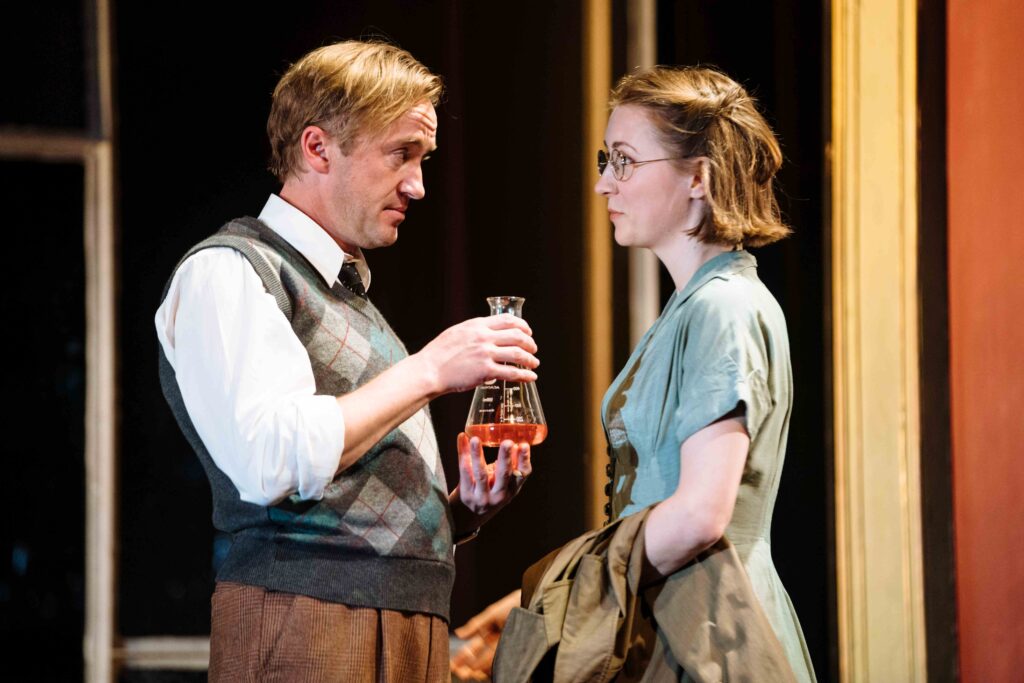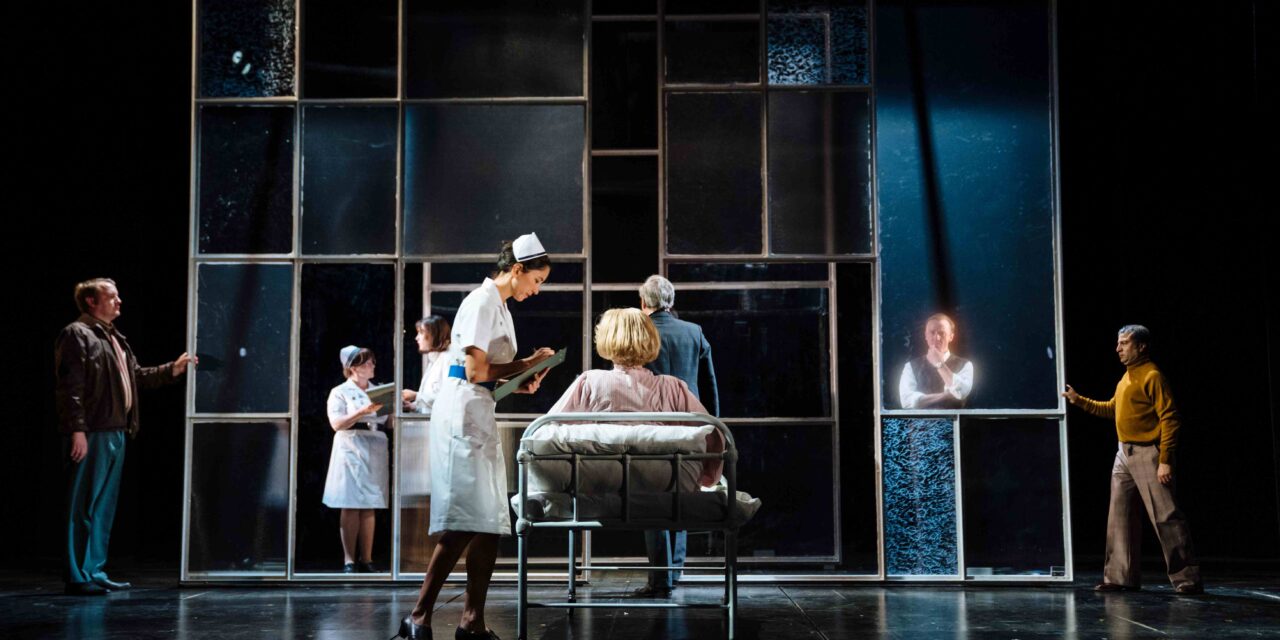
5 June – 6 July
Plays that capture an era with any kind of breadth are few in number and for good reason. For a writer to cast their net so wide is to risk losing focus on any one thing of importance. In this play about a momentous event in scientific and social history, writer, Gareth Farr, has found a subject – the invention of IVF – which allows him to exercise both social breadth and emotional detail. With an opening that would not be out of place in a Jacobean Revenge Tragedy, he sets the scene for human tragedy and an urgent struggle over time. The explosive opening also establishes one of the heroes of the story as a great humanitarian. Patrick Steptoe (Jamie Glover) is that rare thing, the man of science as hero. Together with his equally driven colleague, Robert Edwards (Tom Felton) the two men set out on a course with no smaller ambition than to change the world.
This is a play primarily about a battle. It is a battle for scientific progress against all the usual suspects: the scientific establishment, the church, the fourth estate and our old friend, ignorance. However it is also a play about the human condition, human needs as they apply to women and the emotional rawness of those who needed and continue to need the intervention of science to undo some of god’s handiwork. It is in another sense a play about it’s own time, of the attitudes and preconceptions that permeate any era, that define it and challenge it.
What Farr and director, Matthew Dunster, have cleverly done is give equal billing to the women whose contribution made the project possible. Not only in the scientific field as with embryologist, Jean Purdy (Meg Bellamy) but just as importantly all the women whose personal tragedies and hopes are distilled into the character of Margaret (Adelle Leonce) whose repeated sacrifices made success a possibility. This is the kind of thing drama can do, that we need it to do and it is not without significance in this well constructed play that the most affecting scene is between Jean and Margaret, whose sacrifices are not ultimately rewarded in personal joy, but in the ground she helped clear for women to come after.
Anna Fleischle’s flexible set helps add to the sense of forwards movement whilst composition by Genevieve Dawson and sound design by Niamh Gaffney both add emotional colour to the otherwise clinical setting. The final tableau of the first baby (Louise Brown – who was in the audience) held aloft, lit in darkness by twin spots, was perhaps a little predictable, but nonetheless a fitting climax to a story of optimism and perseverance.
This is an era-defining play that is rich in social scope and emotional depth.
★★★★★ Graham Wyles 12 June 2024
photographers credit @ Helen Murray


